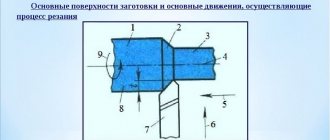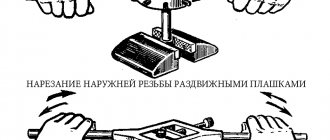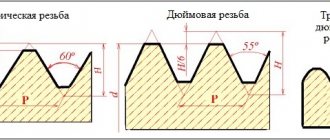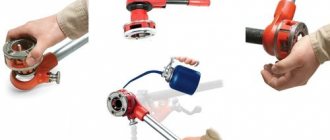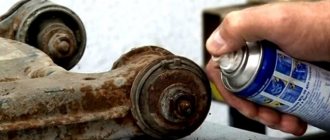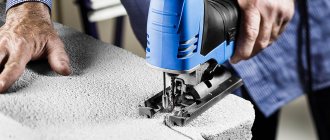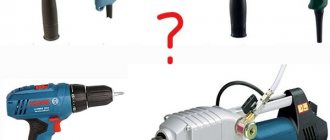A bolted connection can rightfully be called the most common type of fastener. But even the highest quality carvings become unusable over time. The way out of this situation may be to contact a mechanic or cut the thread yourself.
In both cases, this will require a set of dies or dies - hand tools for cutting external threads. With their help, you can quickly restore worn-out hardware or obtain a replacement part for an existing stud or bolt.
Design
The first feature that distinguishes one lehr from another is the design of the body. In accordance with this, they distinguish:
- Round dies. The body is a solid ring through which the workpiece passes. Thanks to high rigidity, a high-quality thread with a good thread profile is obtained.
- Sliding dies, consisting of two parts, are designed to produce threaded surfaces of various diameters.
- Split - the range of thread diameters is 0.1-0.3 mm. Therefore, it is advisable to use them for imprecise threads.
All about dies
A die or die is a device used to cut external threads of various types. It is represented by a small nut on which there is an edge and a chip outlet. The threaded device can have thread pitch sizes from eight to ten.
Thread pitch is the distance between adjacent threaded threads.
The working area of dies is iron pipes and rods. Threads come in conical and cylindrical shapes. To obtain a high-quality thread, you need to cut in one pass. The die has a cutting edge. To make cylindrical threads, dies with two parts of the working area are used - calibrating and cutting. The calibrating part forms the final diameter and thread profile.
Classification of dies
Ledgers are divided into: tubular, square, round and hexagonal.
They are also divided by structure:
- solid;
- sliding (prismatic);
- cut.
The round lecher is the most widely used. It is threaded in one pass, and not in several, like sliding ones. These dies can cut threads at different pitches. They can also be used to cut pipe and inch threads. The working part of round dies is not subjected to grinding. The outside diameter will depend on the size of the chip guards and the size of thread required.
Thread direction
The thread can be right-handed (threads are cut clockwise) or left-handed (counterclockwise). Dies are also distinguished:
- Rights. Used for thread cutting on bolts, axles, screws.
- Left. They are used relatively less frequently in specific automotive elements, rotational mechanisms, and where right-hand threads will unwind. In the photo of the dies you can see the markings with the Latin letters “LH”.
Rules of procedure
When working with pipes, it is important to stock up on dies with a pipe clamp and a wrench. The die is selected taking into account the type of thread required
This can be determined by checking the stamp or inspection. The dies must be marked. The data on them will give an idea of what brand the tool is made from.
Most pipes require straight threads. Also, before working, you need to determine its direction: right or left. To do this, a letter indicator is depicted on the dies: “L” is left, and “P” is right. The die also indicates what grade of steel it belongs to, this makes it possible to choose the right tool for cutting stainless steel pipes.
The cutting rules are quite simple:
1). Prepare the pipe for cutting. To do this, the chamfer is removed with a file, and the area is treated with an oil solution.
2). Insert the die into the holder, securing it with screws.
3). Bring the die to the product and make several circular rotations in the required direction of the thread.
4). Lightly press down the die to embed it into the material.
Scrolling algorithm:
- 2-3 turns in one direction;
- half a turn to the other.
And so on until the end of cutting
In this case, it is very important to keep the pipe and die strictly perpendicular. Otherwise, the thread will “walk”, which will affect the quality of the connection.
The arrangement of elements, as well as thread cutting, is demonstrated on video and photo materials for better results. Checking thread quality is easy. To do this, it is enough to screw the nut if it is screwed along the outer diameter of the pipe. The most accurate cut is obtained with a sliding die. It will help out if you urgently need to replace a piece of pipe that has a threaded connection.
Also, when choosing dies, it is important to consider what kind of thread will be made, external or internal. High-quality work will allow you to make a sealed threaded connection even in pressure water pipes
Let's sum it up
As you can see, making your own carving using dies is not at all difficult. To do this, it is enough to choose the right tool, put in a little effort and accuracy. Probably, many representatives of the male half of humanity remember how similar problems were solved in labor lessons at school. Therefore, for the majority, it will only be necessary to remember the acquired skills and apply them in adulthood. It’s like riding a bicycle: you only need to learn once to feel confident in the saddle even after a long break.
Profile
According to the profile, there are metric, pipe inch dies, and trapezoidal threading tools. Each variety has its own characteristics:
Metric. As the name suggests, they cut metric threads. They are designated by the letter “M”, followed by a number indicating the thread diameter in millimeters. The standards provide for sizes up to 68 mm, each corresponding to a small or large step. Dimensions, designation examples, acceptance rules for such dies according to GOST 9740.
Read here: Hinged wrench: a detailed description of what it is needed for and tips on how to choose a tool
Pipe cylindrical. Visually easy to identify by the letter “G” on the body. This type of thread is measured using the English inch unit, which is 25.4 mm.
So, the designation G 1/2” means that we have a half-inch pipe thread. They are widely used for pipes of heating equipment and water supply systems. Size range from G 1/8” to G 2”.
Pipe conical. In order not to confuse them with other varieties, they are marked with the symbol “K”. They are used when it is necessary to obtain a conical threaded surface - in critical connections operating under pressure or machine components.
Trapezoidal. The cross-section of the threads is an equilateral trapezoid. They are common in power pairs that convert rotation into translational motion. The simplest example is the lead screw and nut of a machine and bench vice.
Some technical characteristics
To begin with, we note that the type of tool in question can only be used in conjunction with special holders.
This is due to the fact that a lot of force must be transferred to the die during machining. One holder can be used to work simultaneously with different types of lechers. The following information should also be taken into account:
- Left-handed dies are used to produce left-handed threads. Today they are used extremely rarely. To identify the tool, the designation “LH” is applied. Such a thread is required when the element is constantly in rotation during operation.
- Pipe versions differ from metric ones; for identification, the symbol “G” is applied to the surface of the body.
- To obtain a cone thread, a conical pipe tool is used. Most often used on production lines for the production of machine tools or fuel pipelines. Indicated by applying the letter “K” to the surface of the body.
When choosing a tool, you should pay attention to the concept of pitch - the distance formed between two adjacent turns. It is worth considering that the die has a main and additional step
Die holders
To cut a thread, one tool is not enough. You will also need an auxiliary device for clamping and holding the die body - a die holder.
One device is designed for several standard sizes at once - for small, medium and large threads. The die is installed inside the holder and secured with a screw.
Manufacturing and labeling
In some cases, manufacturers mark their products with numbers 1, 2, 3. Sets for two taps are made with a slightly larger cross-section of the first rough product.
Industrially produced kits:
- cross section 8-18 mm – one piece each;
- cross section 6-24 mm – first and second;
- cross section 2-52 mm – first, second, third.
- 5/16–3/4" – one piece each;
- 1/4–1" – one rough and one finishing per set;
- 1/4-2" - one rough, one medium, one finishing per set.
For pipe threads with a cross-section of 1/8-4" the kit includes one first number and one second number.
Taps for thread cutting. Table of main characteristics
| Thread | Hole cross-section, mm |
| M1.0 | 0,75 |
| M1,2 | 0,95 |
| M1.4 | 1,1 |
| M1.7 | 1,35 |
| M2.0 | 1,6 |
| M2.3 | 1,9 |
| M2.6 | 2,15 |
| M2x0.5 | 2,5 |
| M3.5 | 2,9 |
| M4x0.7 | 3,3 |
| M5x0.8 | 4,2 |
| M6x1 | 4,96 |
| M7 | 6,0 |
| M8 | 6,7 |
| M9 | 7,7 |
| M10x1.5 | 8,45 |
| M11 | 9,4 |
| M12x1.75 | 10,18 |
| M14 | 11,8 |
| M16 | 13,8 |
| M18 | 15,3 |
| M20 | 17,3 |
Material
For manufacturing, high-speed steels R6M5 and R18 are used. They are optimal in terms of price-quality ratio, have a long service life and cope well with household tasks and minor repairs.
For production conditions, tools with carbide cutting edges are more suitable. With their help you can obtain threads on high-alloy steel.
Conical (inch) tools
These are the same devices as in the previous case. Only on the pipe they make not a cylindrical thread, but a conical one. The body is marked in the form of the letter “K”.
All such products, like the taps themselves, are made from three types of steel:
- R6M5;
- 9ХС;
- CSU.
These types of steel are the most commonly used today. But a species like P18 is quite rare, but it was very common during the Soviet era.
It should be noted right away that all old products that have the USSR quality mark on their body are of better quality than modern ones.
Conical dies
Recommendations for work
Before cutting a thread, you should know certain rules for working with the tool.
If they are not followed, the thread may turn out to be of poor quality, and the threading tool will not last long or may even be damaged during cutting. There are a number of requirements not only for the tool, but also for carrying out work of this type:
- work should always be performed only with the help of a serviceable and sufficiently sharp tool;
- Before starting work, the metal pipe is pre-prepared - old paint, rust and dirt are removed from the cutting site. The surface is cleaned to bare metal;
- using a file or grinder, an external chamfer is made at the end of the pipe;
- When creating turns, it is necessary to periodically lubricate the cutters and the working surface of the pipe. For this purpose, a lubricant or a special composition is used. They are applied both before starting work and during the process.
Method of using lerka (video)
Operating procedure
The lathe allows you to quickly and efficiently form turns on any type of pipe. In order to do this you need to know how to cut a thread correctly:
- The pipe should be clamped securely using a vice or other device.
- It is necessary to remove the outer chamfer from the already prepared and cleaned pipe.
- Insert a holder with a predetermined diameter into the holder.
- Thoroughly lubricate the pipe and threading tool with lubricant.
- The lectern is attached to the pipe in this way so that its position is perpendicular to the axis of the product. If the thread-cutting tool is installed even with a slight misalignment, then the threads may break or the value of its diameter may change.
- The tool holder must be rotated clockwise. This will ensure that a right-hand cut is created on the product.
- After making 3-5 turns, the device is untwisted in the opposite direction, during the process metal shavings will be removed.
- You need to rotate the tool very smoothly, and without making sudden jerks.
- It is important to remember to periodically lubricate the cutters and the internal surface of the joint with lubricant.
- After the last turn is created, the lerka returns to the top, and then goes through the finished turns again.
Please note that the connection length should not be more than 10 mm. This distance is standard for the vast majority of residential piping systems.
Designation principles
To determine the main qualities, you need to understand its designation. The thread designation in the drawings is slightly different from those used by the manufacturer in the production of products. Thread tables allow you to determine the main characteristics only by designation.
The features of the marking include the following points:
- Symbol for the thread in question G.
- The diameter size is indicated after the letter. An example of notation is 1 ½.
- The symbol L indicates that the turns are left-handed.
- The next symbol H indicates the accuracy class.
- The make-up length is represented by numbers at the end of the marking.
The designation of a tapered thread in the drawing provides an indication of the accuracy class. A symbol indicating the accuracy class may be indicated in the technical documentation. The creation of turns is carried out in compliance with one of three classes. In addition, the letters “A” and “B” may be indicated next to the number: the first indicates an external indicator, the second internal. The first class corresponds to the coarsest threads, the third is the highest quality.
